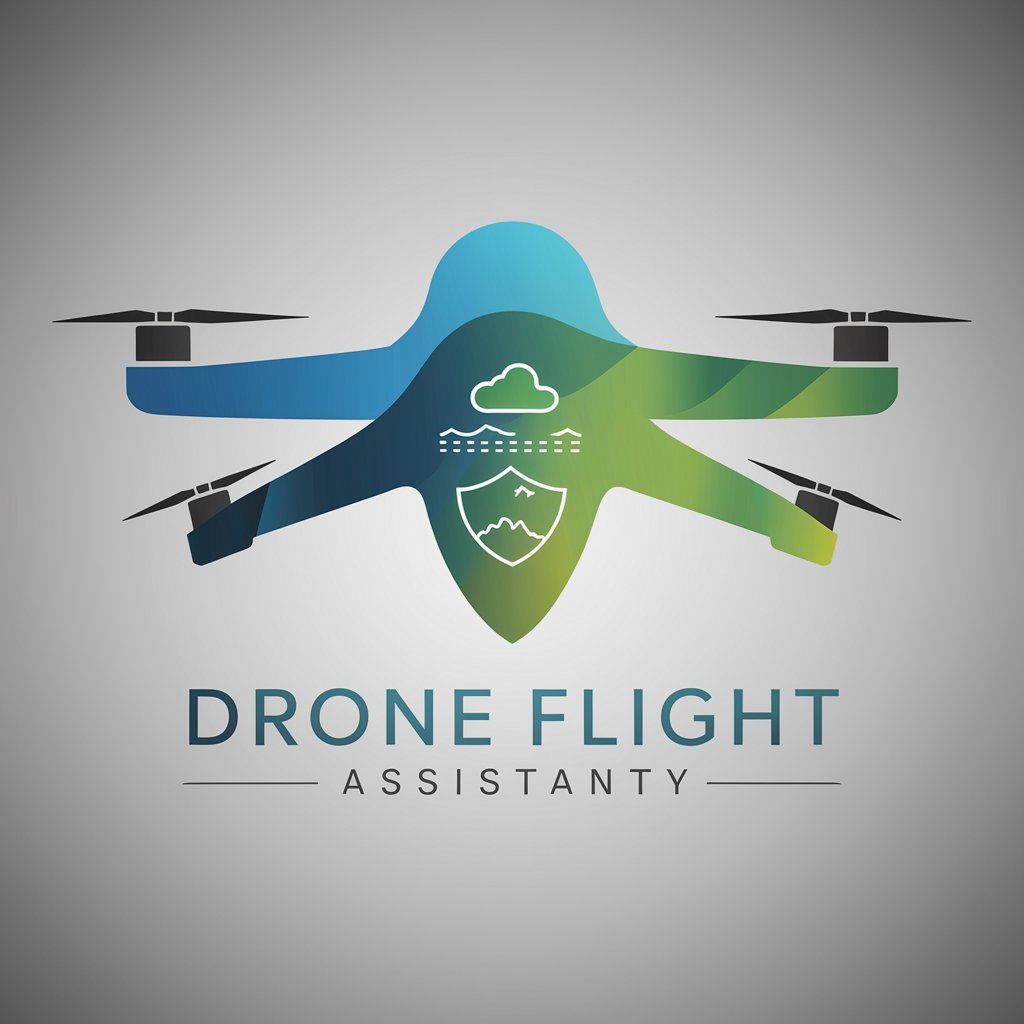Drone Flight Assistant - Drone Flight Planning Tool

Welcome to Drone Flight Assistant, your partner in safe and compliant drone flights.
Elevating Drone Flights with AI-Powered Insights
Plan a safe flight for my DJI Phantom 4 in San Francisco on June 15th at 10 AM.
What are the wind conditions for flying a drone in Central Park tomorrow afternoon?
Are there any no-fly zones near downtown Los Angeles for a drone flight next weekend?
Provide a detailed weather forecast for flying a drone in Miami Beach on July 4th at noon.
Get Embed Code
Introduction to Drone Flight Assistant
Drone Flight Assistant is a specialized GPT designed to aid drone pilots in planning and executing their flights with the highest level of safety and regulatory compliance. By providing up-to-date, detailed weather information, local drone regulations, potential hazards, and no-fly zones specific to the flight area, it ensures pilots are well-informed before taking off. For instance, a pilot planning to fly in a coastal area will receive detailed wind profiles at different altitudes, local wildlife protection regulations, and information on nearby heliports or restricted areas. This service aims to streamline the flight planning process, making it easier for pilots to focus on capturing footage or conducting inspections without compromising on safety or legal requirements. Powered by ChatGPT-4o。

Main Functions of Drone Flight Assistant
Weather Analysis
Example
Providing wind speed and direction at 100-foot increments up to 1,000 feet above ground level.
Scenario
A photographer planning to capture sunrise shots over a mountain range uses this feature to understand wind conditions at various altitudes, ensuring stable flight and optimal camera positioning.
Localized Flight Zone Analysis
Example
Identifying no-fly zones, temporary flight restrictions, and sensitive areas like airports or military bases.
Scenario
Before a real estate agent uses a drone to photograph a property, they check for any temporary flight restrictions due to nearby events, ensuring their operation remains legal and does not interfere with emergency services.
Regulatory Compliance and Hazard Identification
Example
Informing pilots about local drone regulations and potential hazards specific to the flight area.
Scenario
A drone hobbyist planning to fly near a national park receives information on wildlife disturbance regulations and seasonal bird nesting areas to avoid, helping protect the environment while enjoying their hobby.
Emergency Protocols
Example
Providing information on emergency contacts and procedures in case of unforeseen circumstances.
Scenario
A pilot conducting a long-range inspection in a remote area learns about the nearest emergency services and protocols for lost drone recovery, enhancing preparedness for unexpected situations.
Flight Log Maintenance Tips
Example
Offering tips for maintaining flight logs for regulatory compliance and tracking drone usage.
Scenario
A commercial drone operator uses the provided guidelines to keep detailed logs of each flight, simplifying compliance with aviation authorities and aiding in maintenance scheduling.
Ideal Users of Drone Flight Assistant Services
Professional Drone Operators
Includes photographers, videographers, real estate agents, and inspection services who benefit from detailed planning and regulatory compliance to ensure their operations are legal, safe, and efficient.
Hobbyist Pilots
Individuals flying drones for personal enjoyment who need guidance on local regulations, no-fly zones, and safety practices to ensure their hobby does not inadvertently break laws or pose risks to others.
Emergency and Public Service Departments
Organizations that use drones for search and rescue, firefighting, or law enforcement can utilize the service to plan missions with an emphasis on safety, legal compliance, and effectiveness in critical operations.

How to Use Drone Flight Assistant
1
Start by visiting yeschat.ai to access a free trial of Drone Flight Assistant without the need to log in or subscribe to ChatGPT Plus.
2
Provide the make and model of your drone, along with the intended flight area, date, and time of your planned flight.
3
Review the comprehensive weather information provided, including wind speed and direction at various altitudes, to ensure safe flight conditions.
4
Consult the Localized Flight Zone Analysis for information on no-fly zones, temporary flight restrictions, and sensitive areas near your flight path.
5
Utilize the provided emergency protocols, contacts, and tips for maintaining flight logs for regulatory compliance and tracking drone usage.
Try other advanced and practical GPTs
Générateur d'exemples de grammaire en français
Empowering French Learning with AI

Pennies From Heaven meaning?
Unlock deeper insights with AI intelligence.

네이버 쇼핑에서 제품 검색하기
AI-powered Naver Shopping Insights

Wallpaper Wizard 2
Craft Your Dream Wallpaper with AI

FITFO
Empowering Decisions with AI

Swift Relationship Advice
Empathetic AI-Powered Relationship Insights

Better GPT
Elevating AI Interactions with Personalized Intelligence

Pablo: Tattoo Artist
Craft Your Dream Tattoo with AI

Laura Montague : Directrice Relations Publiques
AI-powered PR and Communications Strategist

アートコンテスト察査員
Elevate your art with AI-powered insights

Excel Helper
Elevate Your Excel Skills with AI

Ship Name Generator
Crafting Your Vessel's Identity with AI

FAQs about Drone Flight Assistant
What is the Localized Flight Zone Analysis?
The Localized Flight Zone Analysis is a feature that identifies no-fly zones, temporary flight restrictions, and sensitive areas such as airports or military bases, ensuring your flight plan adheres to local regulations.
Can Drone Flight Assistant provide weather information for specific altitudes?
Yes, it offers detailed weather information including wind speed and direction at 100-foot increments up to 1,000 feet above ground level, tailored to the needs of drone pilots.
How does Drone Flight Assistant help with regulatory compliance?
It provides tips for maintaining flight logs, information on emergency protocols, and updates on community guidelines and legal changes, assisting pilots in complying with local and national regulations.
Can I use Drone Flight Assistant for planning flights in restricted areas?
While it can inform you about restricted areas, it's designed to assist in planning safe and compliant flights outside of these zones rather than enabling flights within them.
How does Drone Flight Assistant enhance flight safety?
By providing comprehensive pre-flight information including weather conditions, regulatory requirements, and area-specific hazards, it helps pilots make informed decisions and plan safer flight paths.
